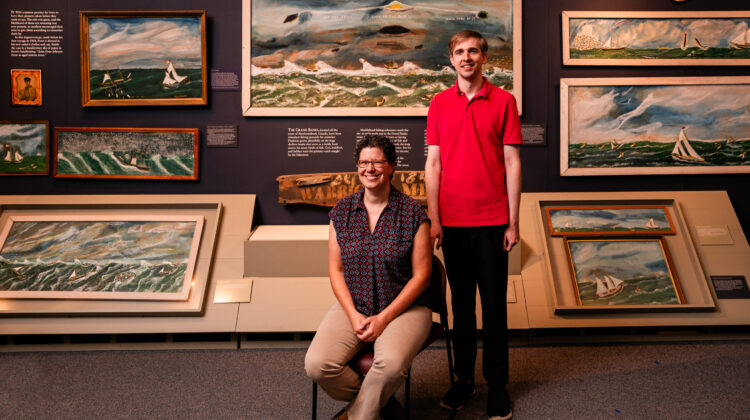Marblehead’s history is so vast it cannot be represented and recounted all in one location.
The Marblehead Museum is an independent, private nonprofit organization that preserves and presents the town’s history. Originally founded in 1898 as the Marblehead Historical Society, it now has three official sites, all with unique experiences to offer. Two of those sites are the J.O.J. Frost Gallery and Jeremiah Lee Mansion, both located on Washington Street in the heart of the town’s historical district. The gallery is also home to the museum’s extensive archives, which contain more than 60,000 artifacts and counting.
Executive Director Lauren McCormack lent her thoughts on how a relatively small town has managed to maintain such an emphasis on its rich history throughout the years.
“Marblehead has some really fascinating history,” McCormack said. “From pre-European contact with the native people who were here all the way through to the 21st century. Whether it’s businesses or involvement in the conflicts and battles.”
McCormack added that she has never seen a town take pride in its history like Marblehead’s in her seven years as the museum’s leader.
The museum’s numerous paper artifacts are stored in non-acidic and waterproof archival boxes.
“A lot of what we have is from the 18th century and 19th century,” McCormack said. “If I was to put something like this in a cardboard box, over time it leeches and basically will harm the artifact.”
McCormack demonstrated a collection of letters, ledgers, and receipts from 18th-century ship captain Samuel White.
The majority of the museum’s collection comes from resident donations, with McCormack and her small team using their resources and knowledge to authenticate them. The research and presentation of the museum’s exhibits is led by McCormack and Associate Director of Programs and Operations Jarrett Zeman. However, McCormack made sure to note that it takes much more than just the two of them to bring Marblehead’s history to life.
“We do have almost 75 volunteers,” McCormack said. “A lot of what we do literally could not happen without them. All of the work on the archives and the objects is volunteer-driven in so many ways.”
In addition to McCormack and Zeman, the museum has three part-time employees.
The J.O.J. Frost Gallery is the largest collection of the eponymous Marblehead native’s various types of artworks. The 19th-century folk artist created paintings as well as three-dimensional models to capture what Marblehead looked like during his era. For that reason, McCormack believes he was more than just an artist.
“What he’s done is collected stories that he heard and experiences that he had and put them into his paintings,” McCormack said. “He would have thought of himself as a historian, I think, if you would have asked him.”
The Jeremiah Lee Mansion is perhaps the museum’s biggest attraction, and is open for tours during the warmest months of the year due to heating restrictions.
The house was built in 1768 for the Revolutionary War-era colonel, and still maintains many of its original features. The exterior remains cosmetically unchanged, with the interior fully furnished with pieces designed like those from nearly three centuries ago — as well as some that truly are. One of McCormack’s favorite pieces in the museum’s entire collection can be found on the top floor.
“Glover Broughton was a sailor and was captured by the British in the War of 1812 and brought to Dartmoor Prison,” McCormack explained. “He drew his experiences at the prison, including the massacre that took place there in 1814… You will find versions of this, but this is the original.”
McCormack, Zeman, and the rest of the museum team are looking forward to the launch of the newest full-time permanent exhibit. The Lee Mansion Brick Kitchen and Slave Quarters will be found at 157 Washington St., adjacent to the mansion itself. The property has since been many things throughout time, and the museum has been “pulling back the layers” of the building to get to its original brick foundation. The exhibit is funded primarily through a fundraiser that can be found on the museum’s website, and is on track to launch in 2025.














